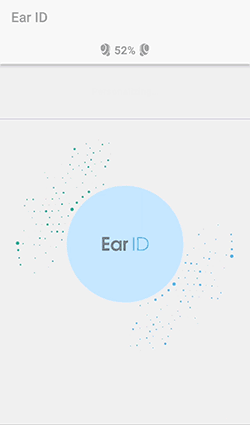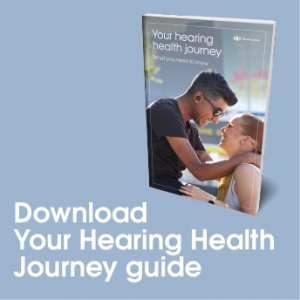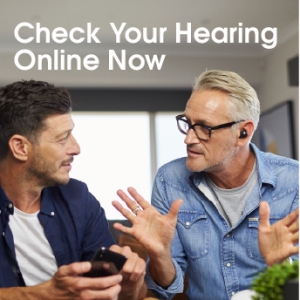
A surprisingly large number of adults struggle to understand speech over competing background noise. Yet when they visit an audiologist for help with their hearing, their hearing tests often show nothing abnormal. As a result, there is little the audiologist can do to help them.
This situation is frustrating for the person who struggles to hear well in noisy environments. It’s equally frustrating for audiologists who want to help but can’t because so little is known about hidden hearing loss.
Understanding Background Noise and Why It Creates Hearing Challenges
Background noise takes many forms. Examples include loud music at a restaurant, crying babies, or the din of travelers at a busy airport. People rely on their hearing and non-verbal cues to make out speech sounds in environments with loud background noise.
The experience of background noise can seem like an annoying buzz that makes it difficult to track conversations normally. People with a diagnosed hearing loss can find some relief with hearing aids, but those without traditional hearing loss may need to do a bit of detective work and experiment with some non-medical solutions to enhance the speech sounds they hear every day.
Chronic Loud Noise Exposure Decreases Hearing Ability
In a recent study conducted by Harvard Medical School, 34 young adults with normal audiograms and no diagnosed hearing issues nonetheless reported difficulty understanding the speech of others in a variety of social settings. Although participants didn’t receive any formal diagnosis, it’s possible they had cochlear synaptopathy, also known as hidden hearing loss.
Because hidden hearing loss does not show up on a standard hearing test, some are reluctant to diagnose the condition. Normally, a child or adult’s inner ear hair cells will react when exposed to certain sounds. With hidden hearing loss, those hairs within the ear respond normally to sounds, but other fibers located in the auditory nerves do not. Current hearing tests do not detect this issue that causes difficulty hearing speech in noise.

“The Center for Disease Control (CDC) estimates that 22 million workers are exposed to potentially damaging noise at work each year. Whether you work at a sports venue, on a tarmac, or operate a jackhammer—hearing loss is preventable.” – U.S. Occupation Health and Safety Administration (OSHA)
Fortunately, more audiologists have gotten on board with the idea that people could have hidden hearing loss. No one in the audiology field wants to see people suffer for years before getting the help they need with an invisible hearing disability. With no help available, some patients could experience worsening hearing loss for years and end up needing hearing aids when older.
Get Tested if You’re Struggling to Hear Speech in Noise
People resist getting hearing help for many reasons. Common reasons include the costs, the stigma of hearing aids, or the hassle of appointments and fittings. People who know the specific sounds they struggle to hear speech in noise should report the problem to their audiologist right away. Some of the most common speech sounds that cause issues for people include:
- F
- K
- P
- S
- Sh
- Th
- V
Each of these letters creates a high-frequency sound that can make it challenging for people with hidden hearing loss to process normally. In an especially noisy situation, some people may feel like they can hear the vowels of a word but not the consonants.
A hearing test should uncover the need for having an audiologist fit the patient with hearing aids for the first time if needed. However, people can also consider other solutions specific to the problem of hidden hearing loss.
Limit Loud and Distracting Environments Whenever Possible
Sometimes it isn’t always possible to limit the sounds heard at work, in the neighborhood, or when socializing with friends. With unavoidable background music, the best anyone can do is make the best of it. For example, employees may be able to listen to soft music over earphones that helps keep their nervous system calm as they focus on the tasks around them.
People don’t always like to admit to others when they have a problem with their hearing. This is especially true among younger people because the issue is most associated with aging. However, changing demographics and a noisier world mean that even everyday activities can feel overwhelming to someone with hidden hearing loss. Those who struggle need to speak up and ask others if they would mind socializing in a quieter place where the person with hidden hearing issues would have an easier time following a conversation.
Speech in Noise Control (SINC) adds unique sound controls for each situation. Wearers can quickly toggle their earbuds to the most comfortable noise settings for their location – muting background noise and enhancing focus on their direct conversations in a noisy environment. pic.twitter.com/bLdYFDPp8y
— Nuheara (@nuheara) February 26, 2020
Create a Personalized Hearing Profile with IQbuds2 MAX
Nuheara has earned accolades from around the world for innovative products that help people with mild and/or hidden hearing loss. Upon connecting the earbuds with the app for the first time, the user is prompted to take a hearing test. The test uses the NAL-NL2 prescription formula and only takes approximately 10 minutes total to complete.
The test measures each ear’s hearing strength at various frequencies to generate a personalized hearing profile. The personal hearing profile then automatically calibrates the earbuds for the user’s hearing. As a result, the user enhances their ability to hear and interpret speech and sound.

While dining out in a noisy restaurant, a person wearing IQbuds2 would switch the earbuds to “restaurant” mode. This preconfigured setting further enhances nearby speech and dims ambient background noises and conversations. It’s also easy to switch profiles from restaurant to office or driving to optimize hearing based upon the setting.
The earbuds fit comfortably in the ear canal like any other type of earbud. Additionally, the buds boast high-fidelity sound, rich bass, and crystal clear phone calls. Another unique feature of IQbuds2 MAX is the ability to focus sound by direction. Users can enhance speech coming from directly in front of them while muting noise from the sides and behind.
Although having a hidden disability is frustrating, emerging innovations like Nuheara’s “speech-in-noise” technology offer new hope. As a result, there are affordable hearing solutions for those who struggle to hear speech in noisy places. Such solutions may also be useful for those with sensory processing issues not caused by hearing loss.


